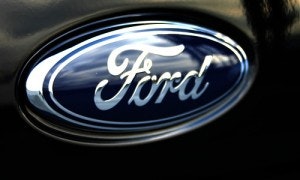Back in February, Toyota Motor Corporation (ADR) (NYSE:TM) unveiled the third generation of its Tundra full-size pickup, which will make its debut in September for the 2014 model year. Let’s take a look at how it might stack up against similar offerings from the big names in Detroit.

While Toyota Motor Corporation (ADR) (NYSE:TM) has become a force to be reckoned with in the U.S. car market over the past few decades, it’s had much more trouble breaking into the full-size pickup segment. Ford Motor Company (NYSE:F) has been the segment leader for a long time with its F-150 pickup, and General Motors Company (NYSE:GM) is a strong second with its Chevy Silverado. (If you include the Silverado’s twin, the GMC Sierra, GM’s total market share in the segment is similar to Ford’s.) Chrysler Group lags well behind Ford Motor Company (NYSE:F) and General Motors Company (NYSE:GM) in terms of market share, but its Ram pickups still have the No. 3 market share spot locked up.
The new Tundra makes some modest performance improvements over the previous version, but the interior redesign is far more impressive. However, truck owners are known for being very loyal to their favorite brands, so Toyota Motor Corporation (ADR) (NYSE:TM) faces an uphill battle to grow its market share. Nevertheless, I believe Toyota Motor Corporation (ADR) (NYSE:TM) may offer significant discounts to drive higher volume. In today’s price-conscious world, this strategy could be successful and drive a significant market-share increase for Toyota Motor Corporation (ADR) (NYSE:TM), at the expense of the Detroit Three.
Tundra’s long road
The full-size pickup segment offers very high margins compared with the auto industry as a whole, which explains why Japanese automakers have tried to break into this business. Toyota Motor Corporation (ADR) (NYSE:TM) opened a new manufacturing plant in San Antonio to produce the second-generation Tundra back in 2007 and hoped to sell 200,000 per year. It was favorably reviewed, won the Motor Trend “Truck of the Year” award, and nearly met its sales goal in 2007. However, the collapse of the housing market shortly thereafter drastically reduced sales; last year, Toyota sold barely 100,000 Tundras. By contrast, Ford Motor Company (NYSE:F) sold more than 645,000 F-Series trucks in 2012.
Clearly, the loyalty of longtime Ford, Chevy/GMC, and Dodge/Ram truck owners puts a limit on the Tundra’s market share. Still, Toyota did gain substantial market share back in 2007 when the last-generation Tundra hit the market. Furthermore, while Toyota hasn’t provided a specific sales goal, executives have said they expect the Tundra’s sales growth to outpace overall segment growth this year, even though the new Tundra won’t hit the market until the fall.
Going for luxury
The main area where Toyota has made significant improvements over the previous generation is in the luxury pickup segment. Toyota is offering many more upscale options on the 2014 Tundra, including two different premium grades — the Platinum and 1794 edition. The fastest-growing segment of the pickup market has been for luxury trucks retailing for $40,000 or more, but Toyota hasn’t previously offered that level of luxury. With the new high-end Tundra models, Toyota is using high-quality leather and other features drawn from its Lexus vehicles.

The 2014 Toyota Tundra 1794 Edition. Source; Toyota.
The 2014 Tundra will also include backup cameras as a standard feature, with a blind spot monitoring system as an additional option. Early reviewers have stated that these enhancements make the 2014 Tundra better equipped to challenge the segment leaders. Even if Tundra doesn’t make much of a dent in Detroit Three pickup volumes, it could still cause them major headaches if it takes a disproportionate share of the high-margin luxury market.
The biggest threat to Detroit
As big an upgrade as the new Tundra is over the second-generation models currently on dealer lots, that alone won’t make it a success in the U.S. market. Even U.S. truck owners who like the Tundra aren’t willing to switch unless Toyota offers a clear value proposition vis-a-vis the Detroit Three. However, the yen’s precipitous decline in the past six months may allow Toyota to do just that.
While Tundra is assembled in the U.S. and uses primarily domestic parts, U.S. sales are still much more profitable for Toyota today than they were six months ago. The more favorable exchange rate means that repatriated dollar profits are worth 30% more in yen than they were last year. Toyota thus has strong reasons to chase sales in the U.S. through heavier use of incentives, particularly in the ultra-profitable pickup market.
If the yen-dollar exchange rate remains where it is today (or the yen weakens even further), I expect Toyota to ramp up incentive spending for the new Tundra to drive big volume increases. Toyota’s ability to increase incentive spending without compromising profitability is its biggest weapon in the pickup market. Favorable pricing is one way Toyota could differentiate Tundra from the other very worthy pickup models on the market today, and potentially eat into Ford Motor Company (NYSE:F) and General Motors Company (NYSE:GM)’s segment-leading market shares.
Foolish bottom line
Toyota’s new Tundra looks as if it will provide some much-needed improvements over the previous generation. Improving sales, particularly in the high-margin luxury segment, could give Toyota’s profitability a nice boost beginning in the fall. Ford Motor Company (NYSE:F) and General Motors Company (NYSE:GM) shareholders should keep an eye out for how Toyota prices the new Tundra. The strong loyalty of most pickup owners should keep the threat to Ford Motor Company (NYSE:F) and General Motors Company (NYSE:GM) relatively modest, but a Toyota-instigated price war could nevertheless cause problems for the current pickup segment leaders.
The article Can Toyota’s New Tundra Challenge the Ford F-150 and Chevy Silverado? originally appeared on Fool.com.
Fool contributor Adam Levine-Weinberg has no position in any stocks mentioned. The Motley Fool recommends Ford and General Motors and owns shares of Ford.
Copyright © 1995 – 2013 The Motley Fool, LLC. All rights reserved. The Motley Fool has a disclosure policy.
